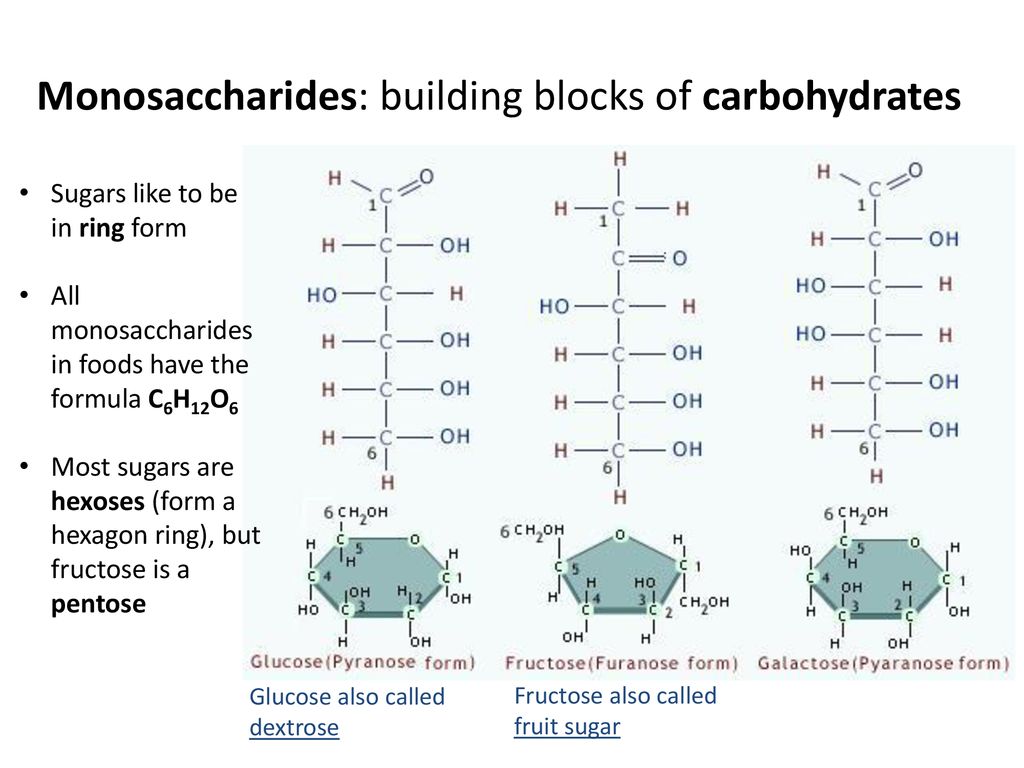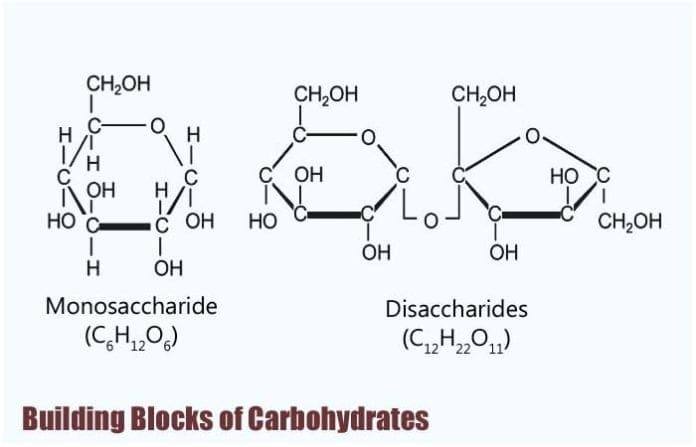Describe the Building Blocks of Carbohydrates
Sugars that arent used for their energy are often stored as lipids or more complex carbohydrates. Carbohydrates provide an easily used energy source for the body.

Maltose Is A Reducing Sugar Formula Function Chemistry Lessons Biochemistry Medical School Essentials
There are several different types of carbohydrates and lipids.

. Describe the processes of how carbohydrates Digestion of carbohydrates protein and fats is the breakdown of the above with their absorption and ultimately forming the building blocks required in the body. Starch is polymer of glucose inulin is polymer of fructose mucopolysaccharides are polymer of glucuronic acids iduronic acid galactosamine glucosamine etc. Which statements describe the structure of each type of macromolecule.
Generally their structures dictate their biological function. Building Blocks of Lipids. Describe the effect on a.
The building blocks of carbohydrates are glucose fructose glucuronic acids iduronic acid galactosamine glucosamine etc. The building blocks of carbohydrates are sugars. Carbohydrates consist of three elements.
A protein may consist of as many as amino acid molecules. Considering the building blocks of proteins compared to the building blocks of carbohydrates and lipids why do you think there are so many more types of. -the building blocks of lipids are molecules that contain mostly carbon and hydrogen.
The building blocks of carbohydrates are sugars that are made of carbon hydrogen and oxygen. In addition to the elements found in carbohydrates and lipids proteins contain the element. The building blocks of lipids are fatty acids glycerol and acetyl CoA.
-the building blocks of proteins are amino acids made of carbon and nitrogen only. Organic Carbon Compounds 1. The next sections describe the structures and functions of each of these basic building blocks.
The building blocks of carbohydrates are sugars that are made of carbon hydrogen and oxygen. The building blocks of carbohydrates are sugars that are made of carbon hydrogen and oxygen. AMIVILIVIUUVUMIL Which statements describe the structure of each type of macromolecule.
Further information on the topics on this page can also be found in most introductory Biology textbooks we recommend Campbell Biology 11th edition1. Check all that apply. The building blocks of nucleic acids are nucleotides made of carbon hydrogen oxygen nitrogen and phosphorous.
Hope this answers the question. Carbohydrates The term carbohydrate is actually a descriptor of what these molecules are composed of. These molecules vary in size structure properties and functions in and among cells.
But there are thousands of different kinds of proteins. The building blocks of proteins are amino acids made of carbon and nitrogen only. Describe and compare the building blocks general structures and biological functions of carbohydrates-include sugars starches-Contain C H and O Three classes-Monosaccharides.
-the building blocks of carbohydrates are sugars that are made of carbon hydrogen and oxygen. Organic Carbon Compounds Based upon carbon skeleton Major building block of cells. Answer to Solved 1.
Identify the building blocks of carbohydrates lipids phospholipids proteins and nucleic acids. The building blocks of _____ are amino acids. The statement that describe the structure of each type of macromolecule would be that the building blocks of carbohydrates are sugars that are made of carbon hydrogen and oxygen.
The building blocks of lipids are molecules that contain mostly carbon and hydrogen. Carbohydrates proteins lipids and nucleic acids. It is the monosaccharides that are mostly used by cells to get energy.
The building blocks of nucleic acids are nucleotides made of carbon hydrogen oxygen nitrogen. The predominant purpose of the carbohydrates you eat is. Carbon hydrates in a ratio of one carbon molecule to one water molecule CH 2 O nADVERTISEMENTS.
The building blocks of lipids are molecules that contain mostly carbon and hydrogen. Oxygen hydrogen and carbon. Carbohydrates can be consumed in various varieties and the numerous building blocks of carbohydrates are discussed in this article.
Since they are present in living things these building blocks are called biomolecules. The building blocks of polypeptides and thus proteins are amino acids. Check all that apply.
The building blocks of lipids are. They are molecular compounds that not only deliver the body with energy but also act as components in other molecular structures such as DNA. Describe the four levels of protein structure.
Describe some of the roles proteins play in the human body. The metabolism of carbohydrates lipids nucleic acids and proteins but we have already underlined the fact that this division is rather arbitrary. Smallest unit of carbohydrate.
In other words amino acids are the base-units the monomers of polypeptides. Monosaccharides are the building blocks for larger carbohydrates and are also used in cells to produce proteins and lipids. Carbohydrates consist of single-sugar units called monosaccharides double-monosaccharide units known as disaccharides and multiple-monosaccharide molecules that make up starches.
Living organisms are made of biomolecules biological molecules that are essential for performing physiological functions.

Monosaccharides Building Blocks Of Carbohydrates Ppt Download

Building Blocks Of Carbohydrates Types Properties Functions

Monosaccharides Simple Sugars Definition List Examples Of Foods Biochemistry Biology Notes Biology

Comments
Post a Comment